The terminology associated with car care is often a source for confusion. Two of the biggest products which are often confused with each other are waxes and polishes. However, these two products are actually very different and have completely different purposes.
In this article, I’ll explain the differences between waxes and polishes and when to use which product.
Car Wax vs Polish
Car waxes are not abrasive and are designed to provide a layer of protection the paint whereas car polishes are abrasive and are designed to remove minor clear coat scratches. Waxes can be used as frequently as necessary but polishes should be used sparingly to preserve the paint.
| Car Wax | Car Polish |
| Does not contain abrasives | Contains abrasives |
| Does not remove any paint | Removes a layer of paint |
| Functions to protect the paintwork | Removes minor scratches and swirl marks in the clear coat |
| Can be used as frequently as needed | Should be used sparingly to avoid removing too much paint |
| Slightly improves gloss by filling minor clear coat imperfections | Dramatically improves gloss by flattening the clear coat |

What is Car Wax?
Car wax is a non-abrasive product designed to protect a vehicle’s paintwork and make it easier to clean. A good quality car wax will have the following functions:
- Repels dirt and water to keep the car cleaner.
- Protects the paintwork from water spots, tree sap, tar and bird droppings.
- Shields the paint from UV rays to prevent premature fading.
- Provides a slick surface layer to make cleaning easier.
- Enhances gloss and fills minor imperfections.
There are several different types of waxes on the market which are grouped according to their application method:
- Paste waxes
- Spray waxes
- Liquid waxes
If you think of a traditional wax then you’ll probably picture a paste wax. These types of waxes come in a tub or tin and are applied in thin layers using a foam applicator. The wax is then left to “cure” for roughly 5-10 minutes during which time it dries out and then the excess can be buffed away.
Spray waxes are a quick and easy solution to applying some protection to the car. They are simply sprayed onto the surface and spread evenly using a microfiber towel, then left for a minute or so to haze (dry) and then buffed off with a fresh microfiber towel.
Liquid waxes come in a bottle and can vary in consistency but are typically like a cream. They are applied to a microfiber or foam applicator, spread in a thin layer and then left to cure for 5-10 minutes typically, after which the excess is buffed away similarly to a paste wax.
Liquid and paste waxes are typically much more durable than spray waxes but more time consuming to apply.
Another way to categorise waxes is by the ingredients they contain.
- Some waxes are described as “natural” waxes and contain ingredients such as carnauba wax, bees wax and montan wax. These natural waxes typically aren’t very durable but offer great levels of gloss.
- Some waxes are described as “synthetic” waxes and contain ingredients such as silicon dioxide (these waxes are typically referred to as ceramic waxes) and PTFE. They tend to be more durable but a bit harder to apply.
- You can also find “hybrid” waxes which contain a blend of synthetic and natural ingredients to get a good all-round wax which offers good gloss, ease of application and durability.
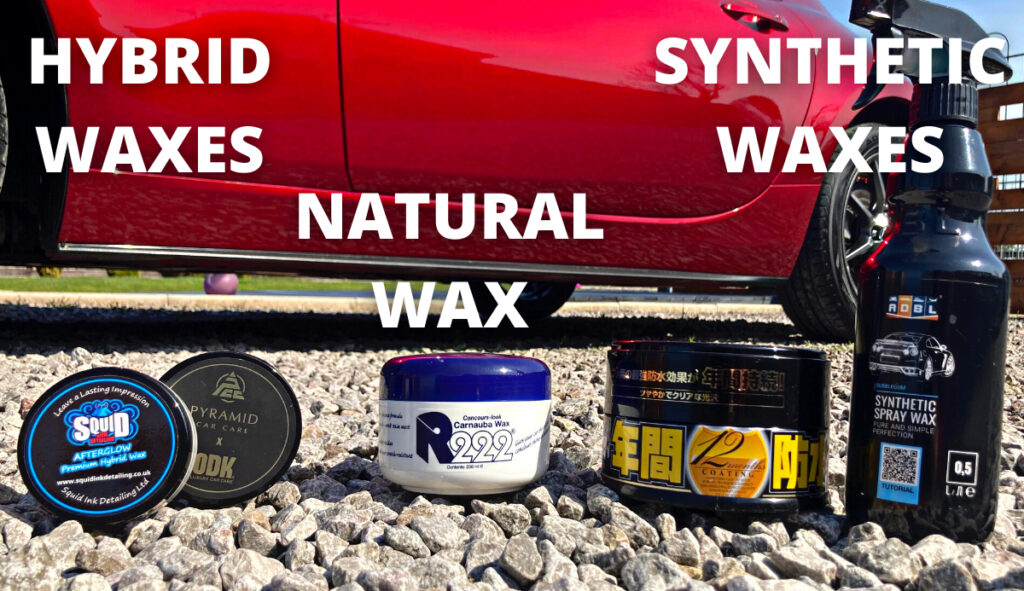
What is Car Polish?
Car polishes are abrasive substances which are designed to remove minor scratches and swirl marks in the car’s clear coat paint. They do this by removing the top layer of damaged clear coat to reveal a fresh flat layer which is free from defects. Car polishes do not have any protective qualities.
On modern cars, the paintwork consists of several layers. The two most important components we need to consider here are the top two, the clear coat and the base coat. The base coat is also known as the color coat and of course provides the vehicle’s color. The clear coat sits on top and is designed to protect the base coat underneath.
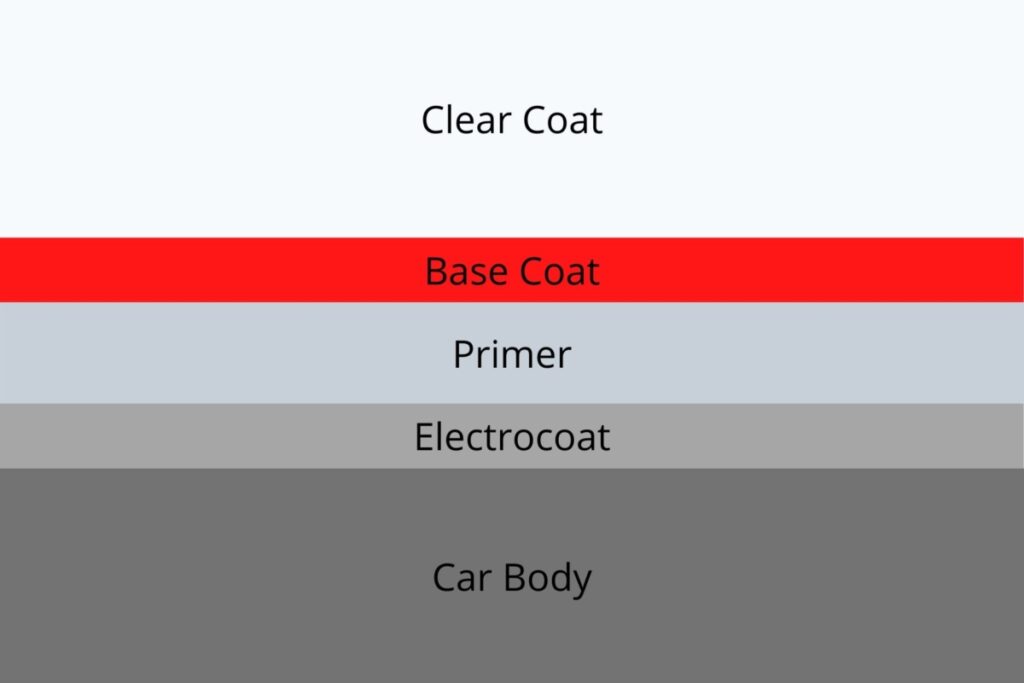
This clear coat can become damaged, most commonly during the wash process. Tools like sponges and brushes will easily scratch this clear coat layer. These clear coat scratches are hard to spot in dull conditions but are easily noticed in direct sunlight. However, they also cause the paintwork to look less shiny in all conditions since the surface is uneven so does not reflect light consistently.
Check out this article to learn how automatic car washes can ruin the paint by causing swirls and scratches.

The way to remove these clear coat scratches is by using a polish. Polishes remove the layer of damaged clear coat by using abrasives to reveal a flat layer which looks much glossier.
The best way to demonstrate how a car polish works is by using a couple of diagrams.
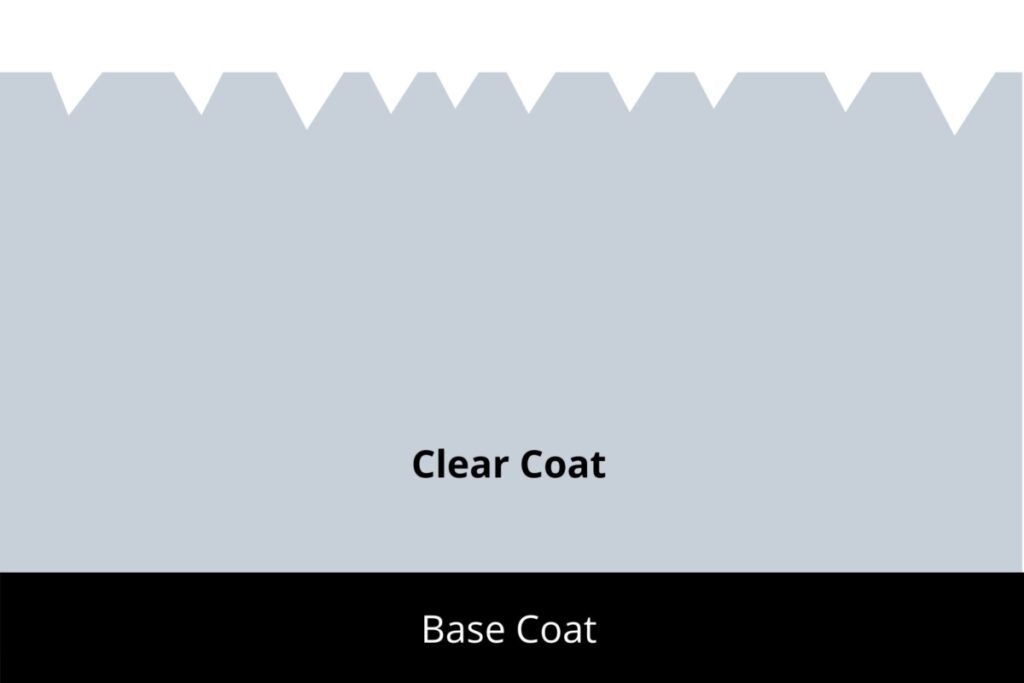
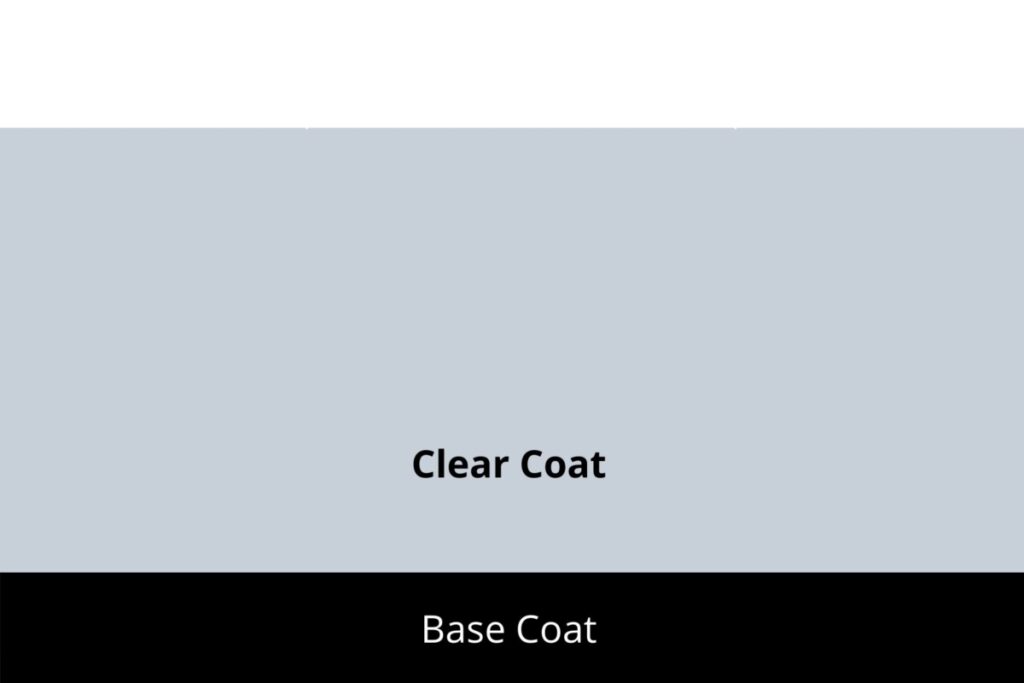
Polishing can be done by hand or by machine. Polishing by hand is safer as it removes less paint, but also will not yield great results compared to a machine polisher where the risks are greater.
Unlike waxing, polishing cannot be done an infinite number of times because you will run out of paint. It should only be done as and when necessary to preserve this clear coat layer.
Should I Use Wax or Polish?
It all depends on the condition of the paintwork and what you are trying to achieve.
- If you are trying to remove minor clear coat scratches and swirl marks, you should use a polish.
- If you are trying to protect the paintwork, then you should use a wax.
Waxes can be used as frequently as necessary as they do not cause any harm to the clear coat. Polishes should be used less frequently because there is a limit to how many times the paintwork can be abraded. As a general rule, polishing should be performed annually as a maximum. However it does depend on the age and current condition of the paint and caution should always be taken to preserve the clear coat.
There is a tiny bit of cross-over between the effect of waxes and polishes which could be a source of confusion. Waxes and polishes both make a car’s paintwork look shinier, but they use different methods to achieve this effect.
- With a polish, the car looks shinier because the layer of damaged clear coat is removed to reveal a flat layer which reflects light more evenly.
- With a wax, the car looks shinier because it contains gloss-enhancers and fills very minor scratches and swirl marks to give the illusion of a flatter clear coat.
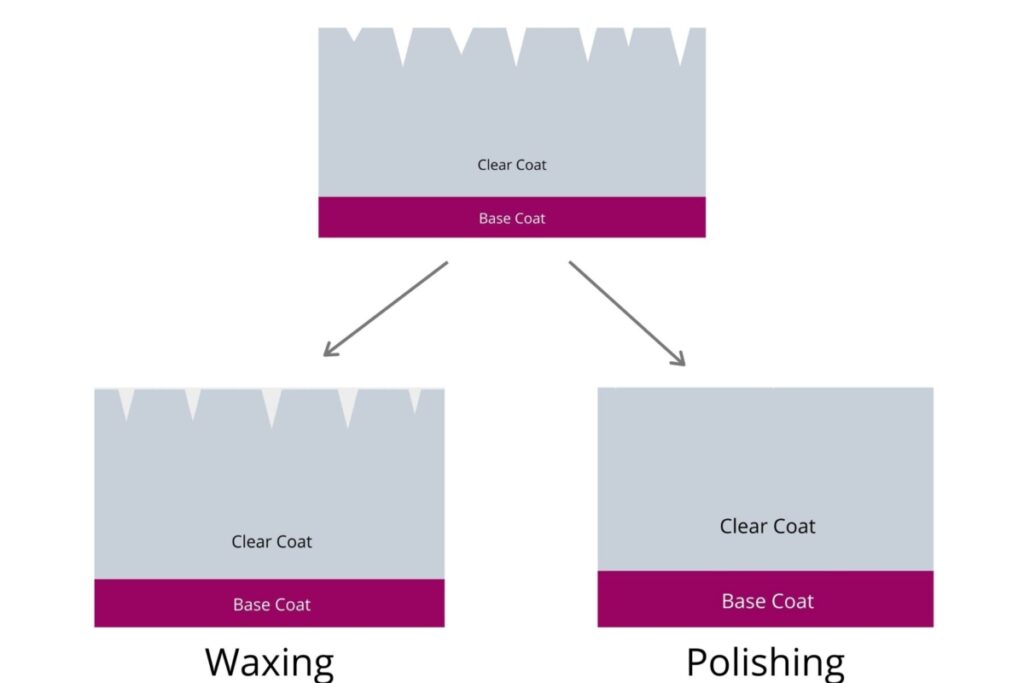
Make no mistake, if the car has scratches and swirl marks, a polish will be more effective because the waxes “filling” ability will not work miracles. However, it’s worth noting that they both have a visual impact on the paintwork.
Still you should always keep in mind the primary function of waxes and polishes when decided which to use:
Waxes = protection
Polishes = abrasion
Should I Wax Before or After Polishing?
As I’ve already mentioned to in the previous section, you should be waxing a car more frequently than you polish it. So which order should you do things?
A car should always be waxed after it is polished. A polish will remove any previous forms of paint protection (waxes and sealants) so a wax or sealant will need to be reapplied immediately after polishing to ensure the paintwork is protected.
You can always wax a car without polishing it first though. Waxing should be done more frequently so it’s fine to wax a car several times a year to make sure the paint is properly protected.

What About Cleaner Waxes and AOI Polishes?
Up until now, I’ve discussed the functions of straight-forward polishes and waxes. However, there are a couple of other “types” of products that we need to address here that blur the lines a little bit in terms of their functions.
Cleaner Waxes
Cleaner waxes are quite rare nowadays but are still available. They have all the protective properties of a wax, but also contain very mild abrasives designed to lightly polish and decontaminate the paint. They do not abrade the paint nearly as much as a polish does, but will help to flatten the clear coat slightly to improve clarity. Think of them mostly as a wax, but with a little bit of polishing functionality sprinkled in.
A cleaner wax can be used quite regularly but overuse should be avoided since you don’t want to continually abrade the paint, even if it is only slightly. These waxes are typically designed to be used twice per year.
All-In-One (AOI) Polishes
All-in-one polishes have three main functions:
- Abrasion
- Filling
- Protection
Like traditional “pure” polishes, AOI polishes have abrasives to remove a layer of clear coat, however these are typically much less aggressive. They also contain “fillers” designed to hide the deeper scratches and swirl marks rather than remove them. Finally they also usually have a wax/ sealant in the formula designed to protect the paintwork.
Hence, AOI polishes function as both a wax and a polish essentially so can be used to save time. However, they tend not to do as good a job as dedicated waxes and polishes at the different functions.
Looking for some good polishes and waxes to try? Check out my recommended products page for all my top picks.

